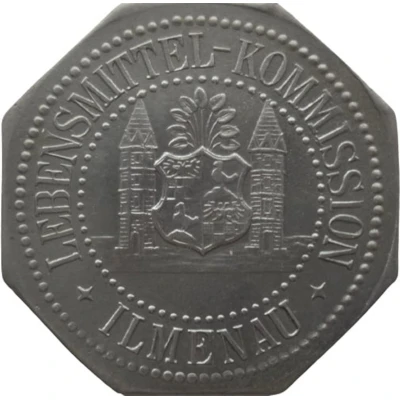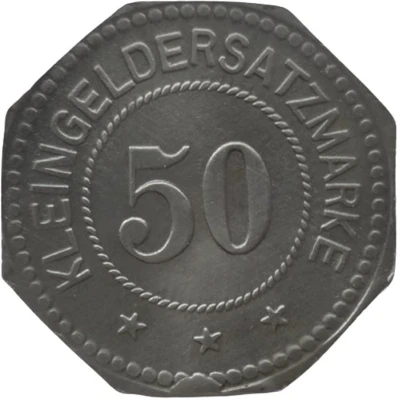


© Willem63 (CC BY-NC-SA)
50 Pfennigs - Ilmenau Lebensmittel Commission ND
1917 year| Iron | 3.6 g | 24.4 mm |
| Issuer | City of Ilmenau (Saxe-Weimar-Eisenach) (Federal state of Saxe-Weimar-Eisenach) |
|---|---|
| Emperor | William II (Wilhelm II) (1888-1918) |
| Type | Standard circulation coin |
| Year | 1917 |
| Value | 50 Pfennigs (50 Pfennige) (0.50) |
| Currency | Mark (1914-1924) |
| Composition | Iron |
| Weight | 3.6 g |
| Diameter | 24.4 mm |
| Thickness | 2 mm |
| Shape | Octagonal (8-sided) |
| Technique | Milled |
| Demonetized | Yes |
| Updated | 2024-10-04 |
| Numista | N#27628 |
|---|---|
| Rarity index | 86% |
Reverse
Pearl rim, legend circling rope circle with denomination centered
Script: Latin
Lettering:
KLEINGELDERSATZMARKE
50
★ ★ ★
Translation: COIN REPLACEMENT TOKEN
Edge
Plain
Comment
Issuing body: [Lebensmittel-Kommission, Sachsen-Weimar-Eisenach].Interesting fact
One interesting fact about this coin is that it was issued during a time of economic turmoil in Germany, specifically during the hyperinflation period of the early 1920s. The coin's value of 50 pfennigs was significant at the time, as it was equivalent to about 1/20th of a US dollar, and it was used as a means of exchange for everyday goods and services. Despite its relatively low value, the coin was made of iron, which was a more durable material than the paper money that was also in circulation at the time. This coin is a tangible reminder of the economic challenges faced by Germany in the aftermath of World War I.